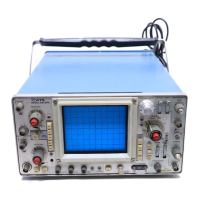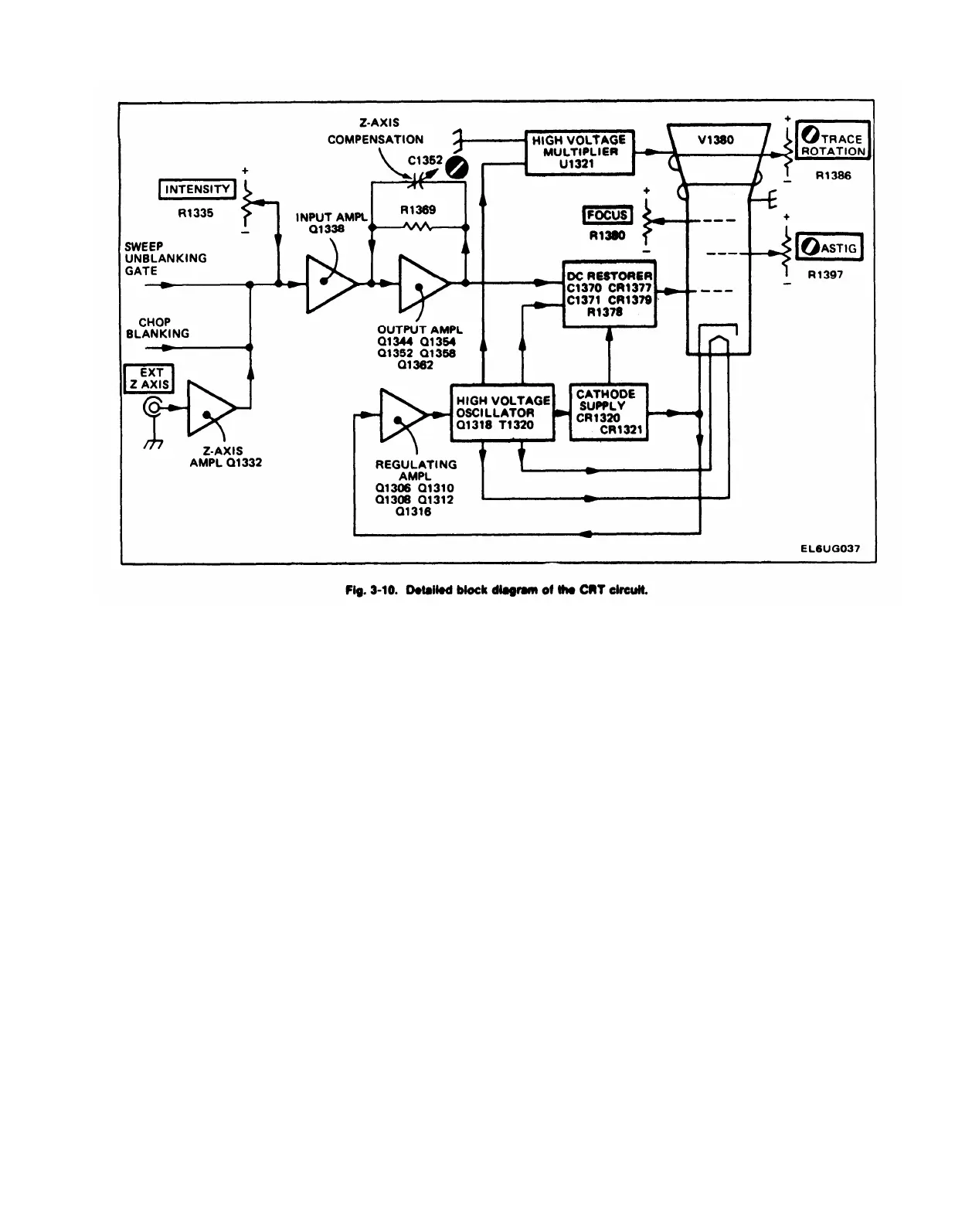TM 11-6625-2735-14-1
High Voltage Oscillator
Q1318 and associated circuitry compose the high-
voltage oscillator that produces the drive for high-voltage
transformer T1320. When the instrument is turned on,
current through Q1316 provides forward bias for Q1318.
Q1318 conducts and the collector current increases,
which develops a voltage across the collector winding of
T1320. This produces a corresponding voltage increase in
the feedback winding of T1320, which is connected to the
base of Q1318, and Q1318 conducts even harder. Even-
tually the rate of collector current increase in Q1318
becomes less than that required to maintain the voltage
across the collector winding and the output voltage drops.
This turns Q1318 off by way of the feedback voltage to the
base. The voltage waveform at the collector of Q1318 is a
sine wave at the resonant frequency of T1320. Q1318
remains off during the negative half cycle while the field
collapses in the primary of T1320. When the field is
collapsed sufficiently, the, base of Q1318 becomes
forward biased into conduction again and the cycle
begins anew. The amplitude of sustained oscillation
depends upon the average current delivered to the base of
Q1318. The frequency of oscillation is approximately 50
kilohertz. Fuse F1318 protects the unregulated +15-volts
supply in the event the High-Voltage Oscillator stage
becomes shorted. C1318 and L1318 decouple the +15-volt
supply line and prevent the current changes present in the
circuit from affecting the +15-volt regulated supply.
Hiigh-Voltage Regulator
Feedback from the CRT cathode –2450 volt supply is
applied to the base of Q1306 through R1303A. Any change
in the Ievel at the base of Q1306 produces an error signal at
the collector of Q1306, which is amplified by Q1308 and
Q1316 and applied to the base of Q1318 through the
feedback winding of T1320. Regulation occurs as follows.
If the output voltage at the —2450 volt test point starts to
go positive (less negative), this positive-going change is
applied to the base of Q1306. Q1306 conducts harder,
which in turn causes Q1308 and Q1316 to conduct harder.
This results in greater bias current to the base of Q1318
through the feedback winding of T1320. Now, Q1318 is
biased closer to its conduction level so that it comes into
conduction sooner to produce a larger induced voltage in
the secondary winding or T1320. This increased voltage
appears as
a more negative voltage at the –2450 volt test
point to correct the original positive-going change. By
sampling the output from the CRT cathode supply in this
manner, the total output of the High-Voltage Supply is
held relatively constant.
3-25

